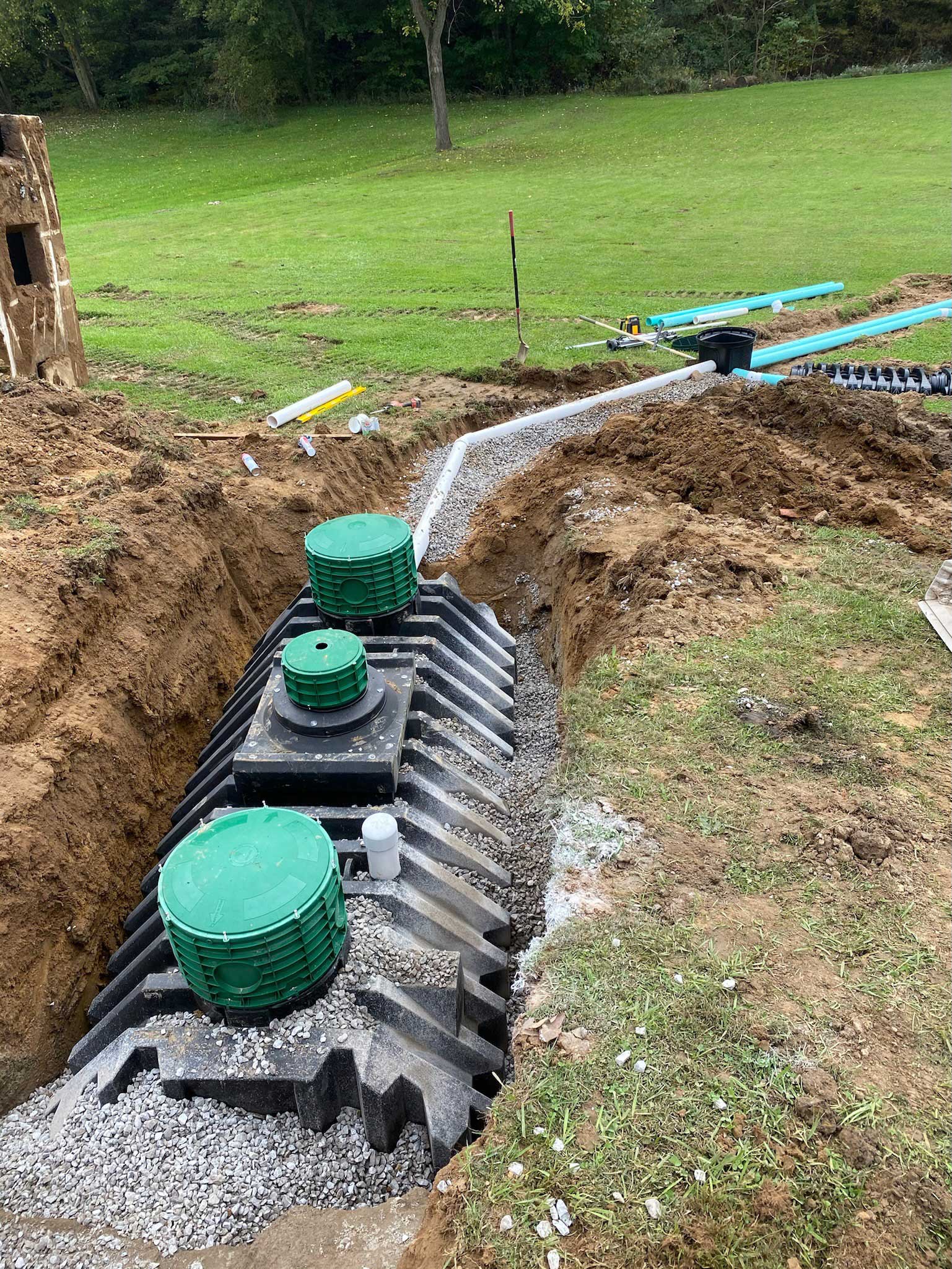Septic Ohio - Comprehensive Septic Tank Solutions in Ohio
Septic Ohio - Comprehensive Septic Tank Solutions in Ohio
Blog Article
Revealing the Art of Excavation: Pro Tips for Safe and Efficient Digging
In the realm of excavation, the mastery of productive and secure excavating is an art type that needs adherence, precision, and knowledge to established techniques. As soil is turned and earth is moved, the intricacies of excavation expose themselves, demanding an eager understanding of equipment, dirt make-up, safety protocols, and environmental factors to consider. The know-how required to browse these elements properly can imply the difference between a successful excavation task and a possible disaster. By unraveling the layers of this intricate process, a globe of methods and insights waits for those seeking to boost their excavation skills to brand-new heights.
Importance of Appropriate Devices
To guarantee the safety and performance of any kind of excavation task, utilizing the ideal devices is vital. Excavation jobs differ in extent and complexity, ranging from little property landscape design work to massive building and construction endeavors.
Excavators are essential pieces of equipment in any digging procedure. These versatile equipments come in different sizes to match different project demands. Tiny excavators are perfect for smaller sized tasks, while larger excavators take on a lot more substantial projects efficiently. Backhoes are another essential devices kind, integrating the functions of a loader and an excavator in one device. They are important for tasks needing adaptability and ability to move.
Excavators stand out in jobs that require pressing big amounts of dirt or debris. By investing in the suitable devices, excavation jobs can be completed securely, on time, and with accuracy.
Comprehending Dirt Make-up
An extensive understanding of soil make-up is fundamental for implementing excavation tasks with precision and safety and security. Recognizing the different kinds of soil is important as it straight affects excavation approaches, equipment choice, and general project performance. Dirt structure usually consists of four main components: sand, silt, clay, and raw material. Each element has one-of-a-kind properties that affect how dirt reacts to excavation processes.
Silt bits are smaller sized than sand but bigger than clay, using moderate drainage and communication. Organic issue, such as rotting plant product, impacts soil fertility and security.
Prior to beginning excavation, performing soil tests to establish its make-up and features is vital. This info assists in selecting the proper equipment, carrying out safety measures, and creating excavation strategies customized to the details soil problems - septic ohio. By understanding dirt structure, excavation specialists can boost job outcomes while ensuring safety and security and adherence to finest methods
Precaution and Protocols
Comprehending dirt composition is the keystone whereupon safety steps and protocols for excavation tasks are built, making certain the well-being of employees and the success of the endeavor. When it involves security throughout excavation, there are several crucial actions that should be carried out to mitigate threats and prevent mishaps.
Firstly, before any digging begins, an extensive examination of the site must be performed to recognize any potential risks such as below ground utilities, unstable soil conditions, or close-by structures that could posture a threat. It is crucial to have an experienced person oversee the excavation procedure to make sure that all safety and security procedures are complied with purely.
Moreover, all employees included in the excavation has to be effectively educated in risk-free digging methods and the proper operation of devices. By adhering to these safety measures and methods, excavation tasks can be finished effectively and without occurrence.
Efficient Excavation Planning
When embarking on an excavation task, thorough preparation is important to make sure effectiveness, security, and successful end results. Effective excavation planning involves numerous crucial steps that are essential for the smooth execution of the task. The initial step is to conduct a comprehensive site analysis to identify any kind of prospective risks, such as below ground utilities or unstable dirt conditions. This info is essential for creating a comprehensive excavation strategy that includes precaution and run the risk of mitigation approaches.
When the website evaluation is total, the following step is to develop a clear timeline and routine for the excavation tasks. This consists of identifying the series of jobs, equipment demands, and manpower allowance. Correct scheduling assists stay clear of hold-ups and guarantees that the job remains on track.

In addition, interaction amongst all staff member is extremely important during the planning stage. Clear directives, regular updates, and effective sychronisation are crucial for an effective excavation task. By spending effort and time in thorough preparation, excavation teams can significantly enhance productivity, minimize risks, and achieve effective results.

Handling Ecological Factors To Consider
With boosting focus on ecological sustainability in construction methods, our website handling environmental considerations description has come to be a crucial element of excavation projects. Excavation tasks have the prospective to influence the surrounding atmosphere through dirt erosion, debris runoff, environment disruption, and contamination of water resources. To reduce these threats, it is crucial to implement ideal methods that focus on ecological security.
Furthermore, proper waste administration is vital to protect against soil and water contamination. Executing procedures for the disposal of hazardous products, recycling of waste products, and minimizing the use of damaging chemicals can dramatically lower the ecological effect of excavation jobs. By integrating these practices into excavation preparation and implementation, construction companies can make certain that their tasks are not just risk-free and efficient but additionally eco accountable.
Final Thought
To conclude, mastering the art of excavation calls for an extensive understanding of proper equipment, dirt structure, precaution, and efficient planning. By adhering to these guidelines and considering ecological aspects, excavations can be conducted safely and successfully. It is crucial to focus on safety and performance in every digging project to make sure effective end results.
As soil is transformed and earth is relocated, the complexities of excavation disclose themselves, demanding a keen understanding of tools, soil make-up, safety methods, and environmental factors to consider.To make sure the security and performance of any excavation job, making use of the appropriate devices is critical.A detailed understanding of dirt structure is basic for implementing excavation tasks with precision and safety. Comprehending the various types of dirt is important as it straight influences excavation techniques, devices option, and overall job efficiency. By comprehending soil make-up, her comment is here excavation professionals can boost task end results while making certain security and adherence to finest methods.
Report this page